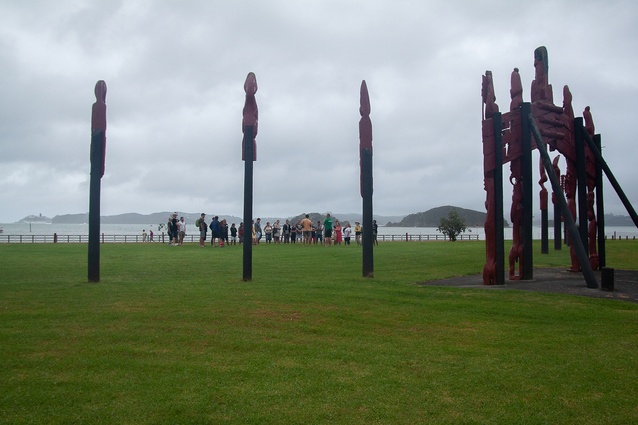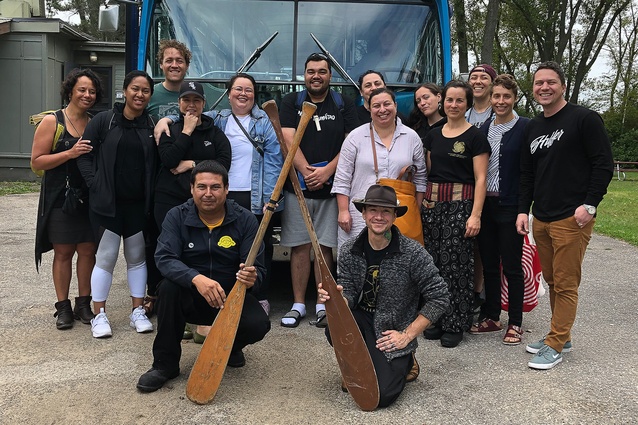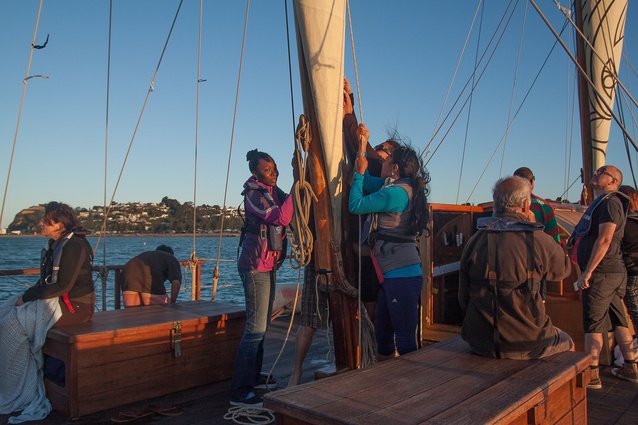Our Aotearoa: Te Tiriti o Waitangi and equity in architecture
Our Aotearoa is a new column that aims to amplify minority voices and start a conversation about issues facing the architecture industry when it comes to ethnic and cultural diversity, wide-ranging inclusion, Indigenous rights and more. The first in this series has been authored by Ngā Aho member Jade Kake (nō Ngāpuhi ki Whangārei, Te Whakatōhea, Te Arawa) and Ngā Aho Co-Chair Desna Whaanga-Schollum (nō Rongomaiwahine, Ngāti Kahungunu, Pāhauwera) and has been published in partnership with The Diversity Agenda.

This will be the first in a series of columns, which will profile Māori, Pasifika, and BIPOC1 practitioners, discuss key issues for our industry regarding representation, cultural considerations and kaupapa Māori2 approaches to practice, all underpinned by a Te Tiriti o Waitangi framework. We believe the issue of diversity in the Aotearoa New Zealand context fundamentally concerns the relationship and balance of power between Treaty partners, tangata whenua and tangata tiriti. Issues of anti-racism and equity should be guided by the groundbreaking work that continues to be brought to light by Te Tiriti, our nation’s founding sovereign agreement.
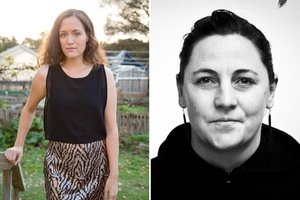
Despite efforts in recent years (such as the Diversity Agenda, Architecture + Women NZ, Women in Urbanism, Ngā Aho, and Papa Pounamu) and increasing visibility of Māori, Pasifika and BIPOC practitioners, the architecture profession is still overwhelmingly homogenous. The cultural majority represented across practice, particularly in senior leadership roles, is predominantly male and Pākehā, and this bias is evidenced in the priorities of industry development and the incumbent support structures.
Five to six years ago, the New Zealand Registered Architects Board began collecting demographic data on ethnicity. The requested ethnic information is not mandatory, and respondents can choose more than one option. Notwithstanding these data issues, those who identify as Māori make up 0.03 per cent of registered architects on the New Zealand Architects Register.3 Many more Māori architectural practitioners are not registered.
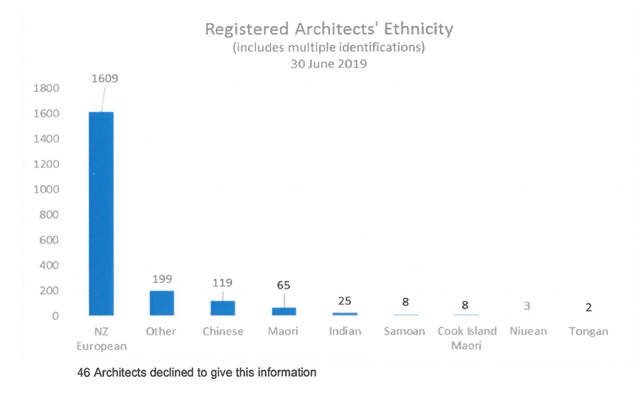
Ngā Aho (Māori Design Professionals Inc) first came together in 2005/06, in response to the Urban Design Protocol4 released by the Ministry for Environment, which failed to meaningfully engage with Māori aspirations and interests in the built environment. As a network of Māori design professionals, largely (but not exclusively) involved in the built and physical environment, Ngā Aho has continued to champion Māori design and Māori design practitioners as an advocate and connector. Ngā Aho has also sought to support and promote Pasifika and broader Indigenous practices and practitioners.
Treaty of Waitangi settlements and the broader movement towards tino rangatiratanga5 (Māori political independence), which reached a critical juncture in the 1970s, has seen an increasing societal awareness and acceptance of Treaty issues. Aside from the work of trailblazers such as the late Ngāti Porou architect Rewi Thompson, movement has been slower in the architectural profession. Visibility of Māori practitioners and mainstream acceptance of Māori approaches to practice which draw on Mātauranga Māori (Māori knowledge systems), have not really become widespread until the early-mid 2000s.
Increasing reference to Te Tiriti o Waitangi in legislation – including the Resource Management Act, Local Government (Auckland Council) Act 2009, Canterbury Earthquake Recovery Act 2011, as well as bespoke Treaty settlement legislation – has seen statutory requirements for mana whenua6 involvement in projects. Additionally, non-statutory tools such as the Auckland Design Manual7 and Auckland Urban Design Panel8 have increasingly required or supported Māori design input and mana whenua involvement in design.
Initiatives such as the Te Aranga principles9 and methodology, developed by Māori designers and mana whenua in Tāmaki Makaurau, and Te Matapopore10 developed in parallel by Ngāi Tūahuriri and Māori practitioners in Ōtautahi, were launchpads for the design professions to begin seriously and tangibly engaging with mana whenua and mātauranga Māori.
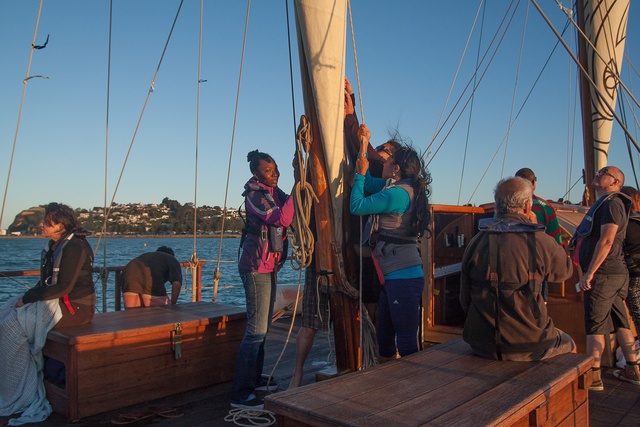
Acceptance of these approaches has not been without challenges, with the cultural divide and capitalist competition vs relational, values-driven approaches sometimes coming into conflict. We have seen competence and confidence to engage with mana whenua grow within our industry, however, these efforts are often led by non-Māori practitioners working within mainstream firms.
The need to grow and resource mana whenua capacity and capability to engage in design and development projects, to bolster and sustain Māori numbers within the professions, and to support the growth of kaupapa Māori practices, remains an ongoing challenge. Furthermore, impact measurement and assessment, including systems for awarding practices, is often distant from the communities Māori cultural work represents. Without pervasive systems-change, whether equity for Māori communities is being supported by the work, remains relatively unknown.
Engagement with Te Tiriti o Waitangi necessarily involves sharing power and providing adequate resourcing to enable tangata whenua to engage. The imbalance of power and resources is structural and embedded; tangible industry impact requires further legislative reform and changes to local and central government policy and procurement, in addition to our actions as practitioners and industry leaders.
Conversations can be confronting and intensely personal – particularly for Pākehā – requiring a fundamental shift in attitudes and behaviours, and a re-examination of values and underpinning assumptions. Network Waitangi11 has supported Pākehā to engage with Te Tiriti since the 1980s, and groups such as Asians Supporting Tino Rangatiratanga12 provide a blueprint for how Pasifika and other tauiwi can meaningfully engage with Te Tiriti o Waitangi. Te Tiriti o Waitangi provides a framework for equity and social justice that includes everyone.
The ongoing advocacy and education efforts of Ngā Aho in this space has been critical. A Memorandum of Understanding (MOU) between Ngā Aho and the New Zealand Institute of Landscape Architects (NZILA) signed in 201513 recognizes the respective entities as pre-eminent professional organizations. Te Kawenata o Te Rata14 – a covenant formed between the New Zealand Institute of Architects (NZIA) and Ngā Aho in 2017, formalises an ongoing relationship between the two organisations, including Ngā Aho representation on the NZIA board.
Relationships with tertiary institutes – including the University of Auckland, UNITEC, AUT and Victoria University of Wellington – (both formally and via the work of Māori teaching staff) are also key to developing an awareness of Treaty issues and growing the cultural competency of our future practitioners, the majority of whom are non-Māori but who will undoubtedly work with mana whenua and Māori clients in future.
For Pasifika and BIPOC practitioners, lack of representation and embedded structural racism creates ongoing equity issues within practice. Further effort is required across the industry, to meaningfully increase numbers including in senior roles. This gains particular significance and urgency for those firms working within and for Pasifika and other non-Pākehā communities, an area that has been accelerated by government-led urban regeneration projects. Much like our system of political representation, the makeup of our profession does not necessarily align with or reflect the communities we serve.
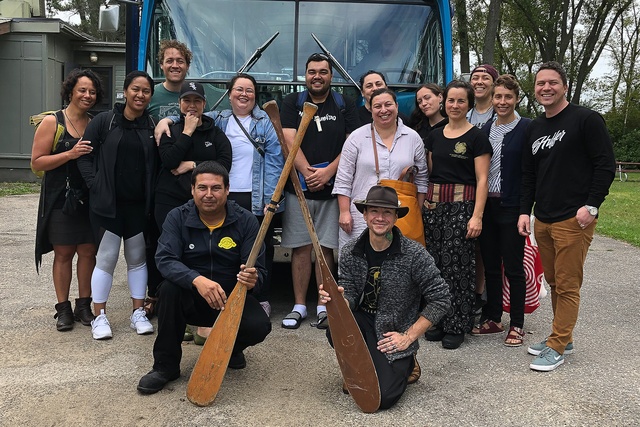
Additionally, engagement with people that are representative of the community served, is often separated from design (by people who are not). Architects, landscape architects and urban designers are, by and large, interested in social issues, and design is often an exercise in radical empathy. However, this is not, and cannot be, a substitute for genuine engagement and representation. As with Māori practitioners, growing and sustaining numbers and providing for meaningful career progression for Pasifika and other non-Pākehā tauiwi practitioners demands integrity and the ongoing commitment of all involved.
There is, of course, still more to do. This series is a small contribution to what is necessarily a wide-ranging and sustained dialogue. Future columns in this series will see invited contributors share their whakaaro15 on a range of themes relevant to our industry. We hope that this can be a space to kōrero on both issues and solutions, pointing to a range of initiatives in which Māori and BIPOC practitioners are leading the way to promote diversity and equitable Treaty relationships across our profession.
1 An acronym for Black, Indigenous, and People of Color, originating in the United States but used here into refer to non-Pākehā tauiwi
2 http://www.rangahau.co.nz/research-idea/27/
3 NZRAB Annual Report 2018-19, p.8, https://www.nzrab.nz/Editable/Assets/AnnualReports/2019_NZRAB_Annual_Report.pdf
4 https://www.mfe.govt.nz/more/towns-and-cities/urban-design-protocol
5 https://natlib.govt.nz/he-tohu/korero/what-does-tino-rangatiratanga-mean
6 https://teara.govt.nz/en/take-whenua-maori-land-tenure/page-1
7 http://www.aucklanddesignmanual.co.nz/
8 http://www.aucklanddesignmanual.co.nz/resources/design-panels
9 http://www.aucklanddesignmanual.co.nz/design-subjects/maori-design/te_aranga_principles
11 https://nwo.org.nz/nwo-approach/ & https://nwwhangarei.wordpress.com/
12 https://www.facebook.com/Asians4Tino/
13 https://nzila.co.nz/media/uploads/2017_03/NgaAho_NZILA_agreement_signed.pdf
15 Whakaaro: Thought, opinion, plan, understanding, idea, intention, gift, conscience. https://maoridictionary.co.nz/

